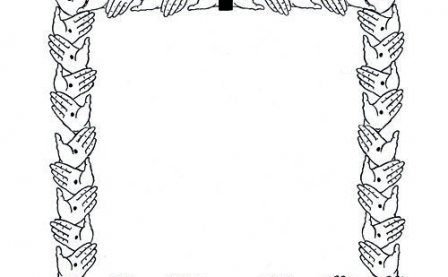As a single track comprising of musique concrète, field recordings, and Norwegian folk music, When’s The Black Death is every bit as desolate and foreboding as the visual imagery that inspired it. It’s a twisted and harrowing work that uses the sound of rats, horses, and screaming infants to embellish the dismal history it sets out to document. But in spite of Lars Pedersen’s experimental approach to collage and composition, Lasse Marhaug writes that the album was also a staple recording among those involved with the Oslo church burnings during the year of its release. Varg Vikernes and company were reportedly inspired by Pedersen’s recordings at this early stage in the bizarre evolution of When’s musical trajectory.
23 years after its initial release by Tatra Productions, a reissue of The Black Death was announced on Ideologic Organ, Stephen O’Malley’s Editions Mego imprint. Cut by Rashad Becker at Dubplates and Mastering, When’s third album is being granted a second wind in the context of the aftermath it left behind. Not only did the album bring about a visionary approach to the arrangement of field recordings and aural tapestry, but it also informed the stifling atmosphere on albums such as A Blaze In The Northern Sky and Hvis Lyset Tar Oss. After looking at the Theodor Kittelsen drawings that inspired The Black Death, it’s not hard to see where those atmospheric tensions were birthed; although the mood is often a peculiar cocktail of despair and emptiness, there is a curious intricacy within each scene that summons the audience towards its gruesome subject.
Instead of focusing on the desolation and horror of the plague as it devastated Norway in the 14th century, Kittelsen created images that explored its impact by also honing in on a particular individual or landscape. This allowed him to illustrated the physical emptiness that surrounded those unfortunate souls. And although these images have also been used by black metal bands in the past (“Fattigmannen” found its way onto the cover of Hvis Lyset Tar Oss), it’s the dejection that Pederson mirrors in his approach that brings each horrifying scene to life. In this respect, the detail within the album’s assembly brings a rich, immersive sense of vulnerability to the listener on playback; it grabs your attention in a similar way that the pictures do.
That vulnerability is intensified through the use of fragments that might otherwise be dissociated or alien to the scene. Pederson uses coiled springs, piercing organs, and laughter to add a supernatural, almost comic feel to his work. This inclusion makes you feel on edge because of how unexpected it is against snippets of people wheezing and the sound of a sick man gargling uncontrollably. It also brings a sense of reality to the project; one typically associates the sound of laughter and toys with children and innocence, but when this is juxtaposed with the gloomy clutter of people dying and funeral dirge, it conjures the most uncomfortable emotive response.
Pedersen balances that discomfort with the anguish in Kittelsen’s pictures. He includes segments of a scythe being sharpened, a murder of crows, and recordings of an open landscape. These sections emphasize the plight of a humble population along with the spaces that they occupied. Even though this has the most gripping effect when quieted violins are thrust against an indistinguishable throttle of static and noise, that balance is retained throughout.
The discernible sounds that Pederson uses are often blunt and muffled — where rumbling cello strings permeate into a percussive build up, for instance — and that complements the altogether raw and experimental nature of the work. The Black Death tells a story, and it does so in a way that is fascinating to observe but painful to endure, shining a light on the complexities of sound collage while simultaneously beckoning its audience to reflect upon a horrible slab of history. The album is by no means a pleasurable listen — even the brief moments of a babbling brook or bird song only lead to a decidedly darker terrain — but it is a benchmark in the arrangement of field recordings and a splendid addition to the Ideologic Organ catalog.
More about: When

